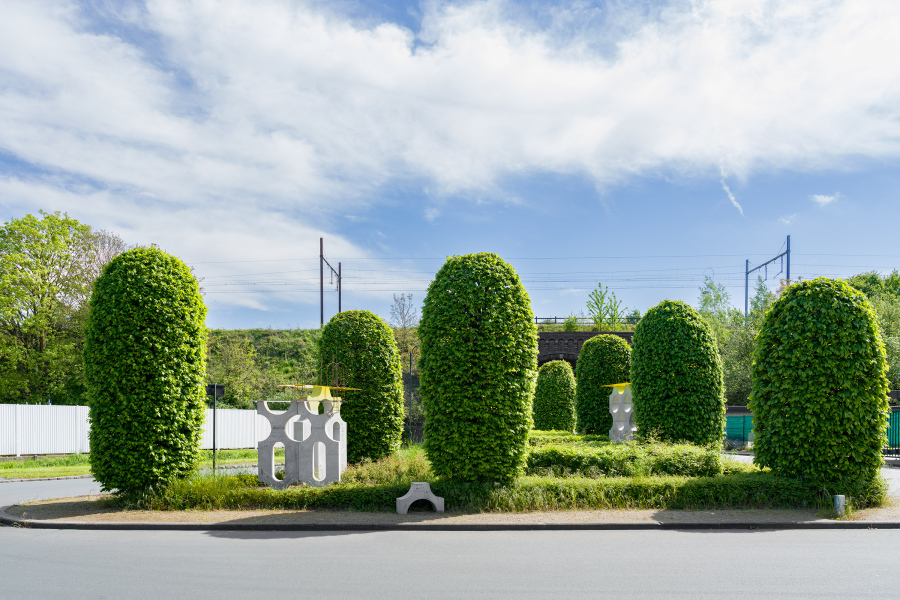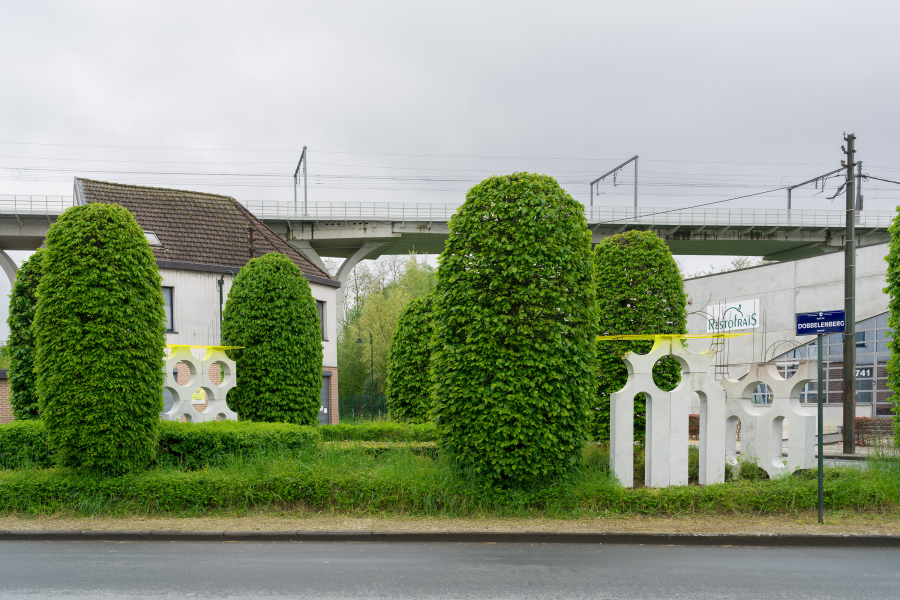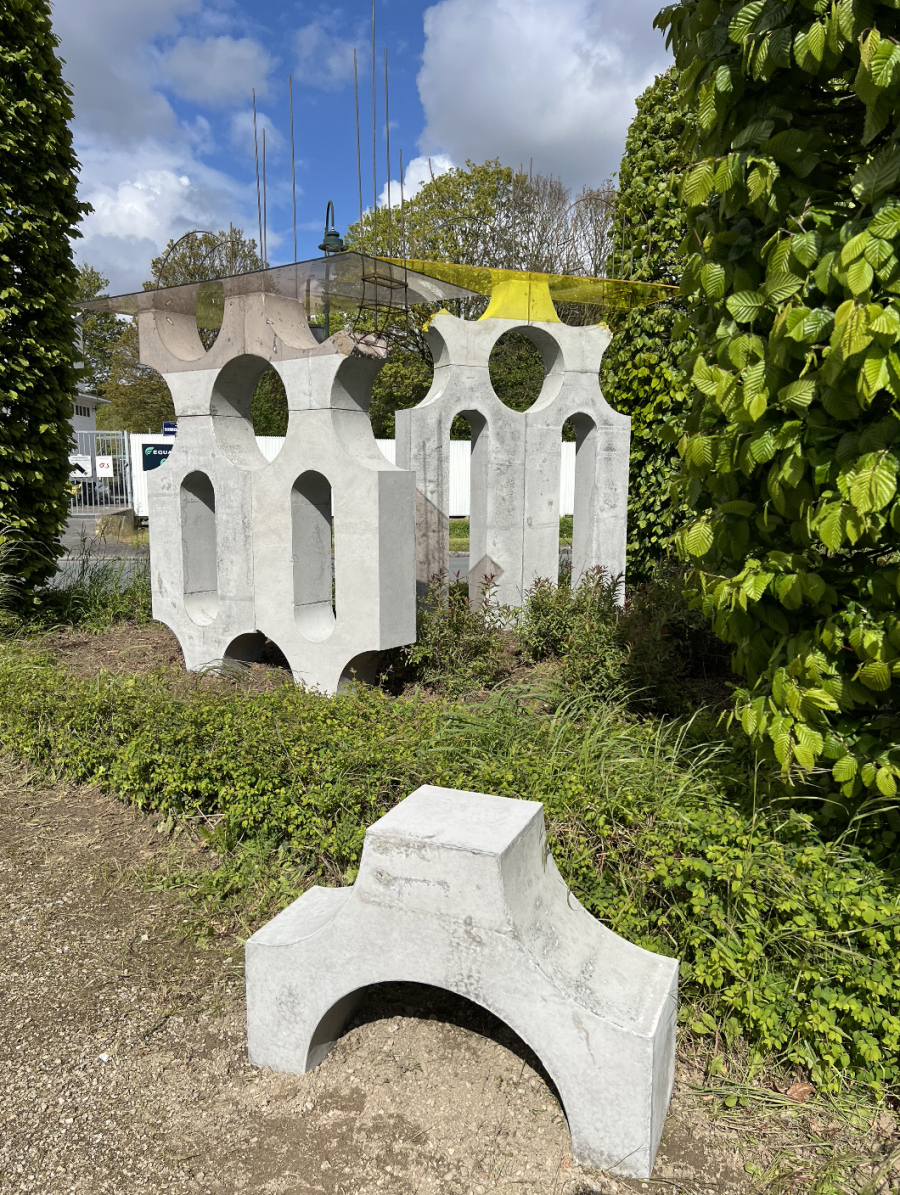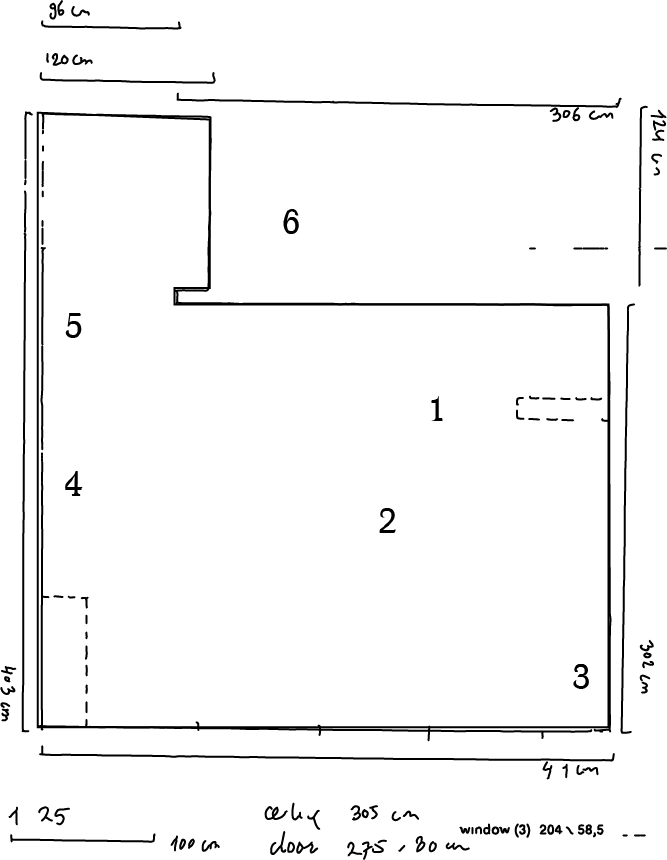-
A Short history of unresolved spaces caused by attempting a greater speed I-III, 2024.Cast concrete, steel rods, poly-carbonate plate;Site-specific sculptures commissioned by Border Buda, at Buda, Brussels.Curated by: Anna Laganovska and Koi PersynPhotos: Evita Vasiljeva and Lola PertsowskyBig thank you to: Sarah Demoen, Lara Claes and The WorkshopBorder Buda is supported by the Flemish Government and the municipalities of Vilvoorde, Brussels and Machelen in partnership with Horst, Buda BXL and Firma
Google Street View (click here) -


-

-
The installation, titled A Short history of unresolved spaces caused by attempting a greater speed, comprises three large sculptures and several small block-like modules, playfully arranged around Witloofplein and engaging in a dialogue with the nearby industrial site and the train network that triumphs over the horizon with its grandiose pillars. Modernism promised more light, air, and space, with architecture grounded in new and innovative construction technologies such as reinforced concrete, steel, and glass. By employing faster construction methods and modular systems, structures ascended towards the sky, aiming to provide more affordable housing and improved speed and connectivity.
As buildings rose taller incorporating larger green areas around modular concrete architecture connected by highways for efficient movement, architects and urbanists overlooked that they have created pigeon holes in their system. High-speed bridge constructions created desolate spaces underneath, while highways transformed into noisy thoroughfares, prompting people to relocate away from them, which resulted in empty spaces between the lines of progress that is not clear what exactly to do with it. This space became an organic industrial zone of disorganisation (*In Buda, it represents an industrial zone. In France, it’s often viewed as dysfunctional social housing. In Latvia, they are unappealing sleeping districts, serving as reminders of the history of socialism).
The Witloofplein, perhaps more fittingly described as a noble roundabout than a conventional square, hosts one of the few bus stops that welcomes visitors to the Haren prison. Although the bus stop has no waiting shelter or seating element, the sculptures offer a place for contemplation, rest, and reflection. Furthermore, they serve as a physical interface between the freedom of movement and the seclusion of imprisonment, evoking this contrast through the use of coloured light and greenery within the square.
Evita Vasiljeva ©

